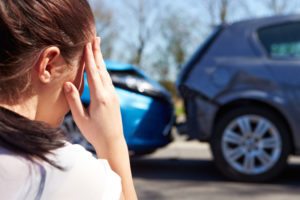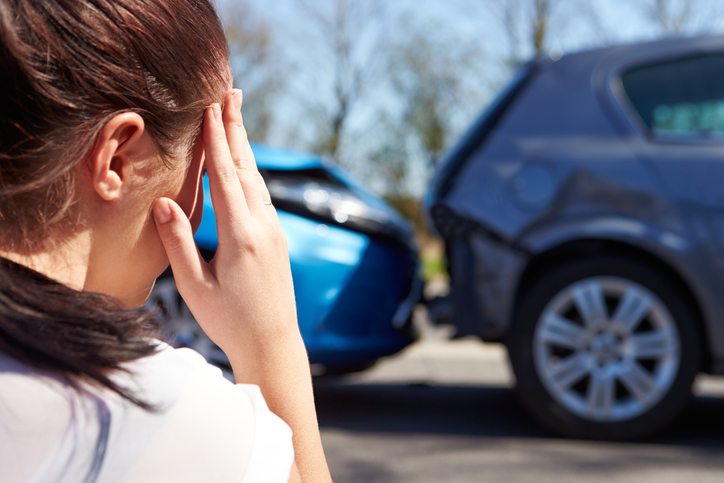 Who Pays for Personal Injuries in a Car Accident?
Who Pays for Personal Injuries in a Car Accident?
How do courts figure out who owes who in a typical auto accident or negligence case? Before someone can ask for compensation for their injuries, they must determine who is legally at fault for them. If someone drives their own car off a bridge, it will be difficult to hold the ten cars driving the other way legally responsible.
Financial compensation for personal injuries is available when you have been harmed by the negligent acts of another person or company. In many cases, car, bus, truck and motorcycle accidents are caused because someone failed to use reasonable care under the circumstances to avoid foreseeable harm to others. As you can imagine, there are many ways a vehicle operator can be negligent and cause your injuries.
Common Car Accidents Caused by Negligence
- Alcohol Related: According to the most recent data available, the NHTSA estimates that over 10,000 individuals were killed in alcohol related accidents, while causing nearly $200 billion in direct and quality-of-life losses. In 42% of cases, the drunk driver causing the fatal accidents were exceeding the posted speed limit as well.
- Speeding: Speeding itself is dangerous to other motorists. In fact fatalities caused by speeding roughly match the number caused by alcohol, with roughly 10,000 fatalities being reported per year. Economic and quality-of-life losses match alcohol related accidents at a total cost of nearly $200 billion annually.
- Red Lights: While Running red lights is far less dangerous in the aggregate, over 1,000 were stil killed in these accidents, and many of those fatalities involved pedestrians and occupants of other vehicles.
- Fatigue: Tired drivers can be dangerous as well. One study performed by AAA found that within the past 30 days over 25% of respondents had admitted to driving while so tired they had difficulty keeping their eyes open. This same study analyzed NHTSA data for a ten year period and concluded over 15% of car crash fatalities involved at least one extremely fatigued driver.
- Driver Distraction: This is becoming more frequent and has become a major cause of auto accidents nationwide in recent years. Distractions caused by cell phones, texting and passengers already account for over 3,000 fatalities per year, and climbing. While the distractions are less serious on average, economic losses associated with these auto accidents still amounted to roughly $175 billion and 18% of all auto accidents by count.
- Standard tort negligence – Any situation where it can be proven more likely than not the driver failed to use reasonable care under the circumstances, and caused an injury to a foreseeable victim, will be held liable for personal injury damages to that victim. This is a broad standard that may be met without indication of any of the above factors. Every personal injury case is different and a qualified personal injury attorney in Fresno can help you determine your legal rights applicable to your unique situation.
Common Motor Vehicle Accident Negligence Defenses
The above list of common forms of car accident negligence is not all inclusive. Every situation is different and your personal injury case may involved varying amounts of fault attributable to many different factors. While many cases may fit nicely into the above categories, every lawsuit looks to facts to determine outcomes. This means that a judge or jury will listen to all of the evidence of your car, truck, motorcycle or bus accident and weigh each of these factors against the others. In fact, they may consider some common defenses to your negligence claim against the other party.
In many cases, the person or company you are suing for compensation will attempt to avoid liability and thus avoid paying compensation. As always the facts of each situation control the outcome of any personal injury case, but two broad defenses will likely be raised in most lawsuits. The first defense to auto accident negligence is called “comparative negligence”. While the standards for this defense vary from state to state, California law imposes a “pure comparative negligence” standard on parties.
What Happens When Both of You Are Negligent?
In California, pure comparative negligence means the courts are willing to blame both parties for the accident, and distribute damages accordingly. When we sue a party for negligence to receive compensation, the opposing party may counter sue for negligence. They might argue that you were being unsafe yourself, for whatever reason may be applicable. If you were both speeding, they may be negligent, but so were you, and it makes it difficult to hold only person accountable for everyone’s losses. Under the pure comparative negligence standard applicable in California, the negligence of each party is determined, and each party is entitled to damages in the percent amount the other party was negligent. Going back to our speeding example, this would mean that if the other party was traveling 30 mph over the speed limit, and you were exceeding the same limit by 10 mph, you would not likely receive 100% compensation. Instead they would weigh their fault against your own, and determine you were perhaps 25% negligent. They would deduct this amount from the total requested damages, and only allow you to recover 75% of your compensation from the other party.
This goes both ways, and it is possible that the party you are suing for negligence might be able to prove you were 60% negligent, while admitting they were 40% negligent. In this circumstance, you would actually be liable for 60% of their money damages, and would be owed only 40% yourself, effectively meaning you owe them money rather than the other way around. Because attribution of fault can be so complex, and have such far reaching consequences, a quality personal injury attorney will attempt to investigate the accident with the intent of maximizing their fault and reducing your own.
Sometimes We Assume Risks And Can Not Blame Others
Another way a defending party can avoid paying for your personal injuries is to raise the defense of assumption of risk. This means that they will argue that you knew about the risks involved and you decided to “take your chances” anyway. Assumption of risk can be proven either by express waiver, such as an injury release for a dangerous activity, or implied where the injured person knew the risks voluntarily encountered the dangerous activity. If the defense can prove you were aware of the likelihood of harm, the extent of possible injuries and you still chose to proceed and not get away, it will prevent you from recovering any money damages from the defendant. Auto accidents are rarely the subject of informed assumption of risk, but under certain circumstances it may still bar any recovery whatsoever. This defense is more reasonable in product liability cases and where the injured person willfully encounters a dangerous activity.
If you believe that your personal injuries may have resulted from an auto accident with a negligent driver, do not hesitate to contact a Personal Injury Lawyer today. You may have opportunities for financial compensation waiting to be uncovered. A free initial consultation will allow you to better understand your legal rights and give you greater peace of mind.
